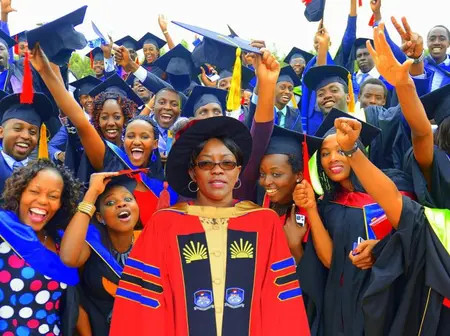Expanding access to higher education is a vital part of the Kenya’s development agenda and aligns with its long-term goals of inclusivity and equity. Yet access alone is not enough, writes Chelsy Maina, Staff Writer at The Kenyan Wall Street.
Kenya’s higher education system is in the middle of a remarkable transformation, but one that is fraught with risks as enrolment outpaces investments in resources and quality.
According to CUE data, public chartered universities remain dominant, hosting nearly three-quarters of the total population at 469,688 students (74.73%), while private institutions enrolled 144,007 students or 23% of the national total.
On the surface, this expansion appears to be a national achievement. Greater access means more opportunities for young Kenyans to acquire skills, improve their prospects, and contribute to the country’s development. But beneath the impressive numbers lies an evident and growing challenge-how to ensure that quality education keeps pace with the increasing access.
The strain is already evident. The report reveals that the teacher-to-student ratio in public universities has worsened, moving from 1:41 in 2023 to 1:44 in 2024. In other words, one lecturer is now responsible for an average of 44 students, well above the ratio recommended for effective higher education.
In contrast, private universities have improved their position, moving from 1:43 to 1:31, a sign that smaller enrolments and more aggressive hiring have helped create more favorable teaching conditions. Still, with public institutions producing about 74% of the country’s graduates, the pressure remains heaviest on the public system, where overcrowded lecture halls are increasingly becoming the norm.
This imbalance raises critical questions. Enrolment may be rising, but what kind of graduates are universities producing under such conditions? Can research and innovation thrive when academic staff are overwhelmed by teaching duties? And, perhaps most importantly, will graduates be adequately prepared for a labour market already struggling with mismatches between skills and opportunities?
The findings are a cause for concern. Even as student numbers surged, staff publications dropped from 5,783 in 2023 to 5,351 in 2024, suggesting that faculty are finding it harder to balance teaching with research.
Research and innovation are supposed to be pillars of higher education, yet they appear to be squeezed out by the demands of mass teaching.
Infrastructure tells a similar story. Public universities hold 65% of the country’s academic resources, but many of these facilities are outdated or overstretched. The report highlights that libraries account for less than 2% of listed academic resources nationwide, while laboratories and research facilities remain scarce relative to demand. If investment in lecture halls, laboratories, and digital resources fails to keep pace, institutions may become focused on producing paper qualifications rather than cultivating intellectual growth.
Kenya is at a crossroads. Expanding access to higher education is a vital part of the country’s development agenda and aligns with its long-term goals of inclusivity and equity. Yet access alone is not enough. Unless investments in staffing, infrastructure, and research match the pace of enrollment, the higher education system risks undermining its own achievements.
The CUE cautions that growth without corresponding resources stretches academic capacity and threatens the quality of graduates entering the job market. In its recommendations, the Commission emphasizes the need for data-driven policy, greater recruitment of qualified teaching staff, and expanded resource allocation. These steps are crucial, but the urgency cannot be overstated.
The dilemma is clear, Kenya must decide whether its universities will be engines of innovation and competitiveness, or simply mass producers of degrees with declining value.

Leave a Reply